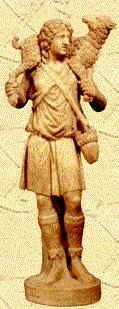
In Jesus’ Shepherd Discourse in John 10, Jesus contrasts himself with “the thief.” “The thief comes only to steal and kill and destroy; I came that they may have life and have it in abundance.” If you hear this verse quoted in a sermon, or see how people use this verse online, you will usually hear that the thief is Satan. But is that what Jesus meant?
All of John 10:1-18 hangs together as a single discourse, split up into three connected shepherd parables. So if we want to understand what Jesus meant by thief, we need to (surprise!) look at the context. Once we look at the whole discourse, it becomes clear that the thief does not refer to Satan, but to Jesus’ opponents, the self-serving human leaders of Israel.
First, the entire shepherd discourse is a direct response to the Pharisees’ mistreatment of one of Jesus’ sheep, the blind man (John 9). There is no natural break between John 9 and 10; in fact, that particular chapter break was probably improperly placed. Thomas Cajetan commented in the early 1500s that “the person who divided the text of the Gospel into chapters was not very judicious in beginning John 10 here.”[1] Jesus goes directly from condemning the Pharisees in John 9:39-40 to a set of parables that contrasted his own leadership with that of the Pharisees.
Second, each of the three parables is about a contrast between Jesus and the failed leaders. They are foolish gatekeepers who cannot tell the difference between a thief and a shepherd (John 10:1-6).[2] Then they are thieves who bring death, while Jesus is the sheepfold gate that brings life (John 10:7-10). Finally, they are the hired hands who abandon the sheep at the first sign of danger, while Jesus is the good shepherd who lays down his life for his sheep (John 10:11-18).
Third, within this particular parable – only one short paragraph! – Jesus is clear that “all who came before me are thieves and bandits… the thief comes only to kill and steal and destroy” (John 10:8-10). There is no hint that he has switched topics. Within a single parable, we expect the symbols to stay the same, so there is no reason to think that Jesus has started to talk about Satan. So the overall context, moving from John 9-10, down to the discourse, and then down to the para
 Ŕ¶Ý®ĘÓƵ
Ŕ¶Ý®ĘÓƵ